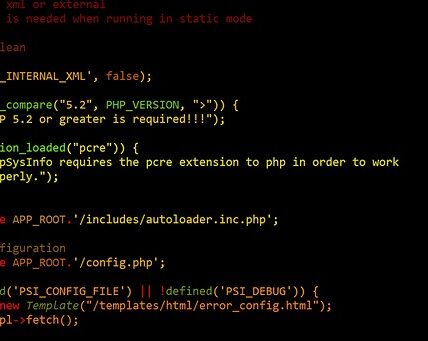Have you ever wondered how to create a dynamic user interface using JavaScript? How React.js fits into the bigger picture of web development? What are some real-world applications of React.js?
These days, complex web interfaces are powered by JavaScript. React.js, a JavaScript library created by Facebook, has become an increasingly popular tool in creating dynamic user interfaces. This library helps developers quickly achieve sophisticated UI creations in an efficient and maintainable way. In addition, the sheer longevity of React.js applications, with the help of its component-based structure, allows for easy code reuse and helps prevent application bloat.
In this article, you will learn about some of the best examples of React.js applications and explore how you can use them in your own projects. We will look at how React.js is used in several popular web projects and consider the benefits of using React.js for web development. We will also discuss the debugging and optimization techniques available for React.js applications, as well as tips for writing clean and maintainable code.
Finally, we will explore various libraries and frameworks that easily integrate with React.js to aid in developing robust web applications. With this knowledge at your disposal, you will be armed with the skills to create applications using React.js that can best meet your own requirements.
Definitions
React.js is a JavaScript library developed by Facebook for building user interfaces. It uses a component-based architecture, and components are the building blocks of a React.js application. Components are reusable pieces of code that can be used to create attractive and interactive user interfaces. This makes React.js extremely efficient and flexible, as components can be reused across multiple projects and platforms. With its virtual DOM, React.js is able to render applications quickly and efficiently, as changes to the DOM are only processed when they are needed.
React.js also uses a declarative approach to programming. A declarative programming language is one in which the code states what it should do, rather than how it should do it. This style of coding is easier to read and understand, making it easier for developers to maintain and iterate on code. Additionally, this style of programming makes it easier to optimize for high performance.
Some good examples of React.js applications include: Facebook and Instagram, which are both built using React.js; Netflix, which uses React.js for its user interface; Airbnb, which uses React.js for its web, desktop, and mobile application; and Uber, which uses React.js for its driver application. As you can see, many of the world’s most popular applications and sites are powered by React.js.
Making Sense of the React Library
Making Sense of the React Library
The React library is a hugely popular web development tool that many web developers have come to rely on when creating dynamic user interfaces. React is an open-source JavaScript library that specializes in helping developers create interactive user interfaces with the help of reusable UI components. Allowing developers to develop their own components, React allows for immense flexibility when it comes to user interface development. React also uses an abstraction called the Virtual DOM to help make developing applications more efficient by allowing developers to control what the final rendered version will look like.
Benefits of Working with React
React makes working with user interfaces easier due to the virtually limitless ways that React can be used. Developing applications in React is incredibly fast as components are packaged together and data-binding prevents re-rendering of entire sections of code. Additionally, React gives developers access to tools like JSX which enables developers to write HTML-like syntax using JavaScript syntax, making writing code in React simpler than ever.
Examples of React Being Used
Examples of React in action can be seen practically everywhere. From large scale applications like Facebook and Airbnb to smaller scale projects like the official React website and Instagram. Additionally, React is seen in countless mobile applications, including Facebook Messenger, Discord, and even the Facebook mobile app. In many ways, React has come to define modern day web development, and is continuing to be utilized by developers all over the world.
- Griddle – A plugin to create tables and grids with React components
- Imports.io – Extracts large amounts of data from webpages
- FlipMove – Allows users to animate child components with a simple API
- ReduxForm – Makes it easy to create forms in React applications
Ultimately, React is an invaluable tool for web developers due to its ability to provide ease-of-use and flexibility when creating user interfaces. Being extensively used in web and mobile applications all over the world, React’s track record speaks for itself and its popularity is likely to continue to increase in the years to come.
Understanding the Components of React
React.js is a powerful JavaScript library used for building user interfaces and development of dynamic application development. It is an open-source library maintained by Facebook and a community of individual developers and organizations. React.js allows developers to create reusable user-interface components, enabling them to quickly build complex yet powerful web applications. In particular, React.js is used to create Single-page Applications (SPA) and is often preferred for its ability to create large projects with little effort.
Creating Dynamic Web Components with React.js
In order to build a dynamic and interactive web application, developers must be able to quickly build and deploy user-interface components. With React.js, developers need not worry about creating these components from scratch since the library provides a variety of components to use. Components are organized into distinct files and can be reused in multiple parts of the application upon instantiation. With components, developers can control the way the user views and interacts with each element of the app.
Data Flow and Life Cycle Methods
To build an effective and efficient user application, it’s important to maintain an organized data flow and to understand how components are managed by the library. React.js uses flux to help manage data flow and ensure components are being updated and rendered properly. Life cycle methods are also called upon to help control when components are loaded and the order in which events are triggered. Life cycle methods are powerful as they enable developers to pinpoint when and how components should be created and destroyed.
Troubleshooting with Redux
When troubleshooting an application, it’s important to have an efficient and organized system for debugging. Redux, a state management library, works closely with React.js to help developers debug their applications and track errors. Redux simplifies the process of troubleshooting and debugging by allowing developers to review the application’s state at any point in time. Redux also enables developers to roll back the application to a specific state in order to investigate and fix potential issues.
These are just a few of the features of React.js that help developers create dynamic and powerful web applications. With its descriptive components, efficient data flow, and life cycle methods, developers are able to quickly and effectively build and launch user-friendly and engaging web apps.
Maintaining Your React Codebase
Maintaining a React codebase can be challenging for any developer, because codebases are constantly changing. React’s flexibility and ease of use make it a great choice for creating robust applications, but that also means it’s important to keep your codebase organized and maintainable. Taking the time for proper React codebase maintenance can save you time and headaches in the future.
Manage Dependencies Wisely
As React’s popularity has grown, so have the number of dependencies available for use. When adding dependencies to a React project, be sure to choose ones that are maintained, well documented, and relevant to the project. It’s also important to keep dependencies up to date, as this will ensure that you’re taking advantage of the latest performance, security, and bug fixes.
Optimize Code
Performance is important, no matter which language you’re using. React code should be optimized for efficiency, making use of caching, memoization, and other techniques. Keeping code small and clean will make your project easier to maintain in the future. In addition, make sure to use React’s lifecycle hooks to maximize efficiency, as they allow you to identify which components need to be updated at different times.
Enforce a Standard Code Style
When several developers are working on a single project, it’s important to have an agreed upon code style in place. This eliminates confusion, helps developers find code more quickly, and ensures code is consistent. A coding standard can be established that covers things such as variable and function naming, indentation, and other conventions. ESLint can be used to enforce code conventions, and establish the coding style across the project.
Write Tests
Writing tests for your React code is essential for ensuring that updates and changes in the future don’t cause unintended issues. React Testing Library can be used to create reliable unit tests. Tests should cover corner cases and other potential issues, and code should be tested before it’s released. Automated testing tools, such as Jest, can be used to test code on a regular basis.
Maintaining your React codebase is essential for ensuring that the code is secure, efficient, and maintainable. Taking proactive steps, such as managing dependencies wisely, optimizing code, enforcing a standard code style, and writing tests, can go a long way towards ensuring your React application stands up to the test of time.
Conclusion
Have you ever wondered why React.js is gaining so much traction? React.js is an incredibly powerful and versatile JavaScript library, and its popularity is still on the rise. It enables developers to create stunning and dynamic user interfaces quickly and easily. With React.js, anyone can create an app that meets the modern web development needs with little effort.
If you’re interested in learning more about this amazing library, follow our blog for the newest releases and updates on React.js. Keep your eyes open – you’re sure to find something that will make your development process easier.
FAQs: Here are some of the frequently asked questions about React.js:
Q1. What is React.js? React.js is a JavaScript library used for building user interfaces. It enables developers to create fast and efficient user interfaces, making it perfect for web applications.
Q2. How difficult is React.js to learn? React.js isn’t difficult for developers to learn, especially for those with a basic knowledge of JavaScript. With the right resources and guidance, anyone can learn how to use React.js quickly and start developing apps.
Q3. What are some benefits of using React.js? React.js offers many advantages including fast development, easy to maintain code, scalability, and reusable components. Additionally, React.js makes it easy to create stunning user interfaces.
Q4. Are there any limitations to using React? As with any technology, there are certain limitations and drawbacks to using React.js. It can be difficult to debug, and components can get complex with too many props and states.
Q5. How secure is React.js? React.js is generally secure, though developers should also be aware of potential security risks. Never store sensitive data on a client-side, and always pay attention to the security of the libraries you use.




